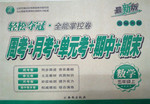题目内容
Whenever human populations have lived in forest areas, they have always cut down trees which they used for a number of purposes, for housing and ships and served as a source of heating fuel and timber. Growth of cities often meant expansion into forest areas, while even more trees were removed to provide space for agriculture. With the growing demand for paper, vast quantities of trees have also been cut down for paper production. These factors, along with many others, have been contributing to a dangerous phenomenon known as deforestation.
In the last 5,000 years, humans have reduced forest from roughly 50 percent of the earth’s land surface to less than 20 percent. Most of this original, or old growth, forest cover is concentrated in three large areas: the Canadian and Alaskan boreal forest, the boreal forest of Russia, and the tropical forest of the northwestern Amazon Basin and the Guyana Shield. These areas comprise almost 70 percent of the world’s remaining original forest cover. In most places, the rate of deforestation is increasing, with the alarming result of 16 million hectares disappearing worldwide every year.
Loss of forest does not just mean the decline of natural resources. There are several other factors that make deforestation seriously harmful to both the human and natural worlds. One of them is changes in the global climate. For example, forest clearance is releasing substantial volumes of carbon dioxide (CO2) into the atmosphere as vegetation is burnt or decays. It has been suggested that this is a significant factor in global warming. Moreover, about 10 percent of the world’s tree species are in danger of extinction as a result of deforestation. Deforestation also threatens biological diversity through the destruction of wildlife habitats, which endangers a number of animal species and leads to their potential disappearance. Species are particularly easy to extinction in tropical rainforests because many species have few individuals per unit area, which makes reproduction more difficult. Finally, since forests play an important role in storing water and stabilizing soil, deforestation and the resulting change in land use cause soil erosion (腐蚀) and other forms of land degradation.
72. The passage discusses all of the following EXCEPT the ________.
A. causes of deforestation B. consequences of deforestation
C. management of deforestation D. rate of deforestation
73. The word “diversity” in the last paragraph probably means “________”.
A. variety B. expansion
C. development D. advantage
74. Why does the author mention fuel and timber in Paragraph 1?
A. To explain the rate of deforestation.
B. To compare them with housing and ships.
C. To show the dangers of deforestation.
D. To illustrate the causes of deforestation.
75. Which of the following sentences summarizes Paragraph 3 best?
A. Deforestation threatens biological diversity.
B. Deforestation has many harmful consequences.
C. Deforestation causes changes in global climate.
D. Deforestation should be stopped.
72. C 73. A 74. D 75. B
解析

 轻松夺冠全能掌控卷系列答案
轻松夺冠全能掌控卷系列答案Driving in a foreign country is always different in at least some ways from driving in your own country. Here are some general points regarding driving in New Zealand.
l Visitors wishing to drive in New Zealand do not require an international driver’s license but are required to carry their local driver’s license whenever driving.
l Vehicles drive on the left-hand side of the road as they do in Britain, Australia, and Japan. Most rental vehicles will have a sticker reminding you of this important fact.
l When the traffic light is red, you must stop. There is no left turn rule as in North America.
l New Zealand road rules follow international standards but please note that in New Zealand vehicles turning left must give way to traffic turning right.
l In general, if you are turning left (where there are give-way signs or no signs), give way to vehicles that not turning. In all other situations, give way to vehicles crossing or coming from your right.
l Seat belts must be worn at all times while driving in New Zealand. This stands for the driver and passengers. The driver is responsible for ensuring all passengers are wearing their seatbelts.
l Do not drink alcohol before driving in New Zealand—drinking and driving laws are strictly enforced.
l Speed limits are in kilometres per hour (kph), not miles per hour (mph).
Speed conversion: 1 kph equals 0.621 mph; 1 mph equals 1.61 kph.
l The speed limit on the open road is 100km/h. In towns and cities the speed limit is 50km/h. Be sure to obey all school crossing speed reductions as speed cameras operate regularly throughout New Zealand.
For further information and up to date road conditions visit: http://www.transit.govt.nz
1.What can be learned from the passage?
A. A passenger’s not wearing the seat belt has little to do with the driver.
B. There will be a reminder for drivers to remember to drive on the left side.
C. Cars passing a school in towns should drive at a speed of less than 31 mph.
D. A foreign driver is expected to have a driving license issued by New Zealand.
2.Which of the following statements correctly explains road rules in New Zealand?
A. In Figure 1, Car B must give way to Car A.
B. In Figure 2, Car B must give way to Car A.
C. In Figure 3, Car B must give way to Car A.
D. In Figure 4, Car B must give way to Car A.
 |
3.This passage is most likely ____________.
A. a travel brochure for locals
B. a website travel introduction
C. an advertisement of travel
D. a travel column in a geographical magazine